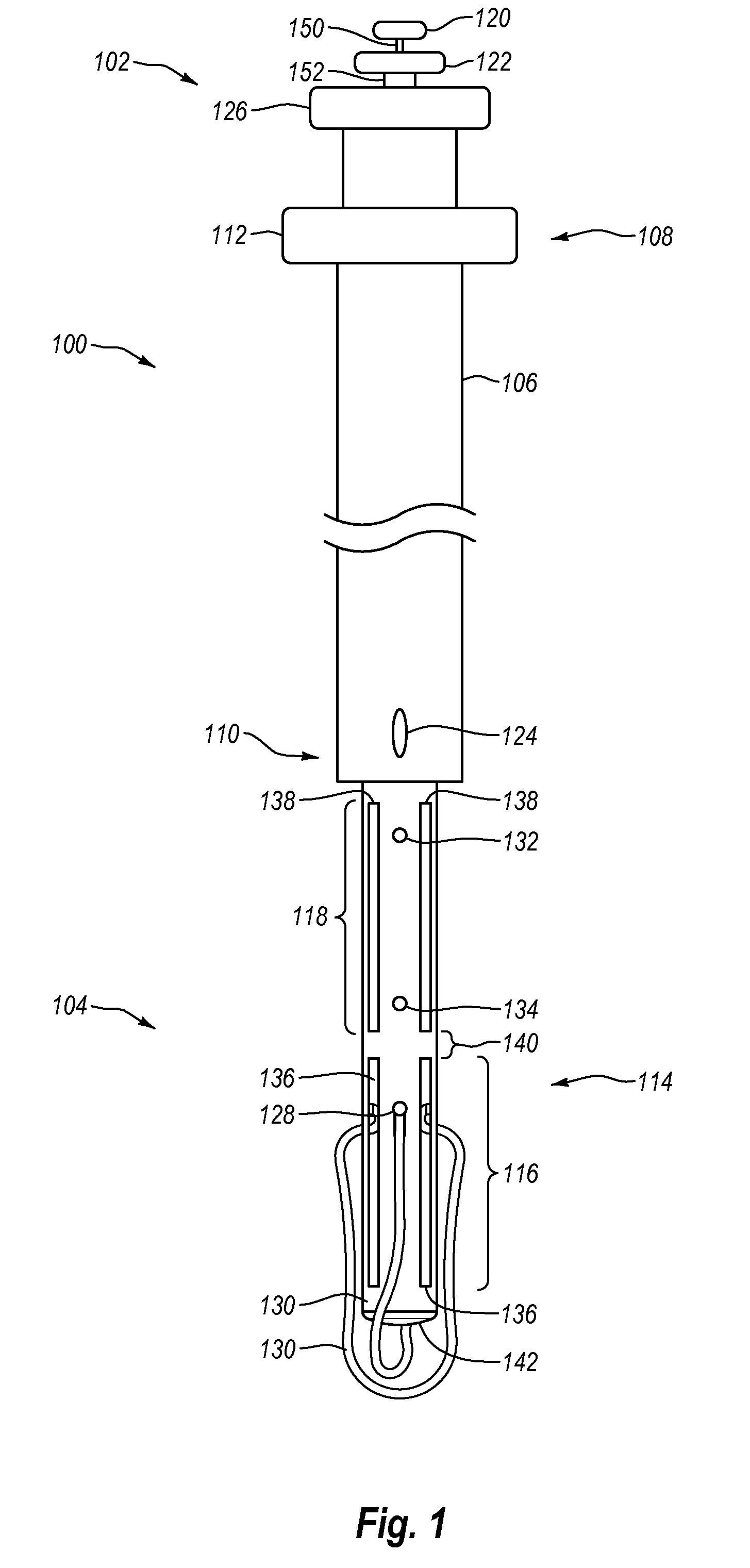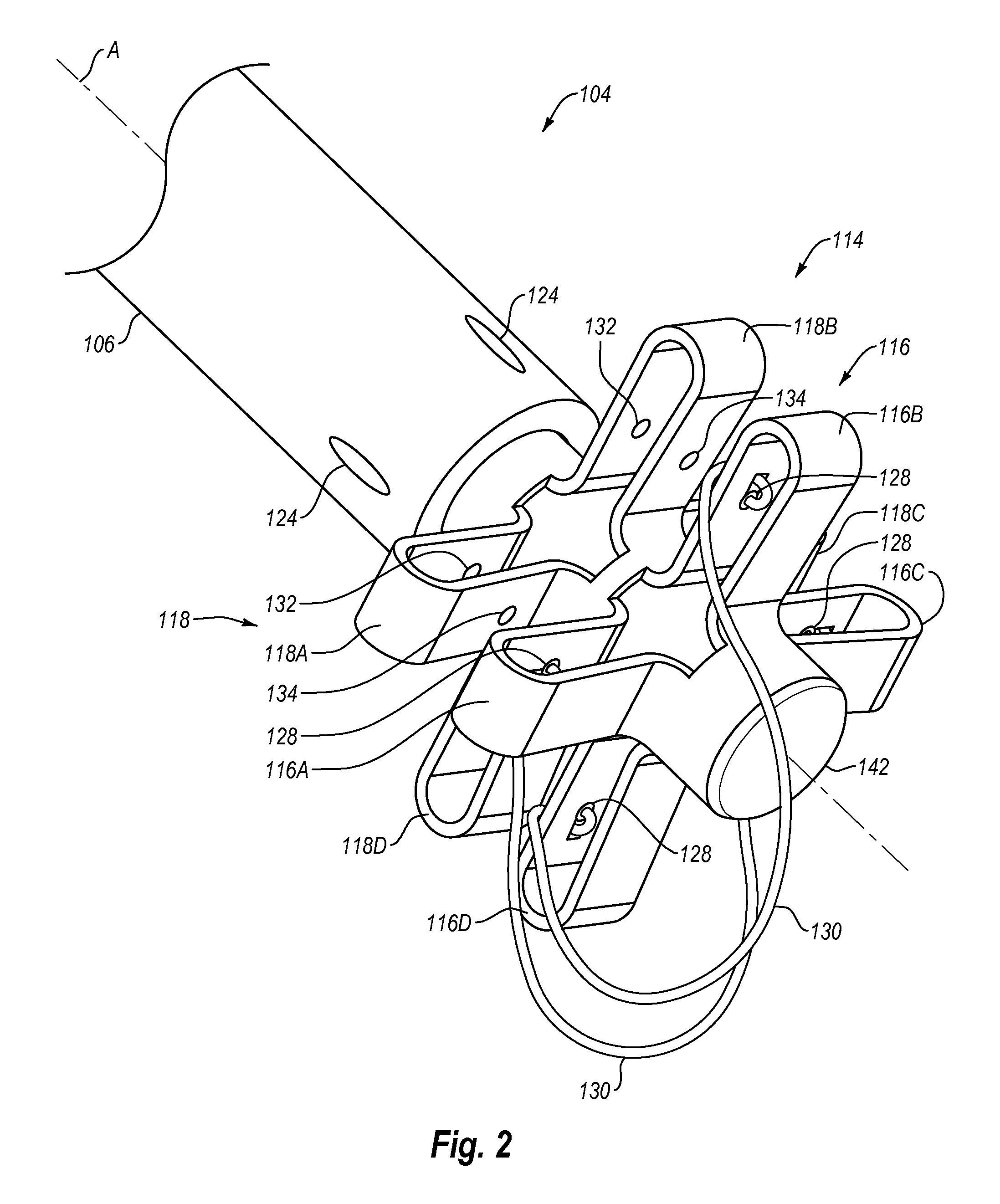Closure devices and methods
a technology of percutaneous closure and opening, applied in the field of percutaneous closure devices and methods, can solve the problems of increasing the time required before completion of manual compression procedures, relying on clot formation, and consuming manual compression procedures
- Summary
- Abstract
- Description
- Claims
- Application Information
AI Technical Summary
Benefits of technology
Problems solved by technology
Method used
Image
Examples
Embodiment Construction
[0031]As used herein, the term “distal” is generally defined as in the direction of the patient or away from a user of a device. In the context of a medical device intervention with or through a vessel wall, “distal” herein refers to the interior or the lumen side of the vessel wall. Conversely, “proximal” generally means away from the patient or toward the user. In the context of a medical device intervention with or through a vessel wall, “proximal” herein refers to the exterior or outer side of the vessel wall.
[0032]The term “suturing” is herein intended to include the process of joining two surfaces or edges together with a fastener or so as to close an aperture, opening, or wound, or join tissues. The fastener is usually a suture such as a thread of material (either polymeric or natural), gut, wire, or the like. The term fastener as used herein also includes clamps, studs, hasps, catches, hooks, rivets, staples, snaps, stitches, VELCROC, buttons, and other coupling members.
[003...
PUM
 Login to View More
Login to View More Abstract
Description
Claims
Application Information
 Login to View More
Login to View More - R&D
- Intellectual Property
- Life Sciences
- Materials
- Tech Scout
- Unparalleled Data Quality
- Higher Quality Content
- 60% Fewer Hallucinations
Browse by: Latest US Patents, China's latest patents, Technical Efficacy Thesaurus, Application Domain, Technology Topic, Popular Technical Reports.
© 2025 PatSnap. All rights reserved.Legal|Privacy policy|Modern Slavery Act Transparency Statement|Sitemap|About US| Contact US: help@patsnap.com



